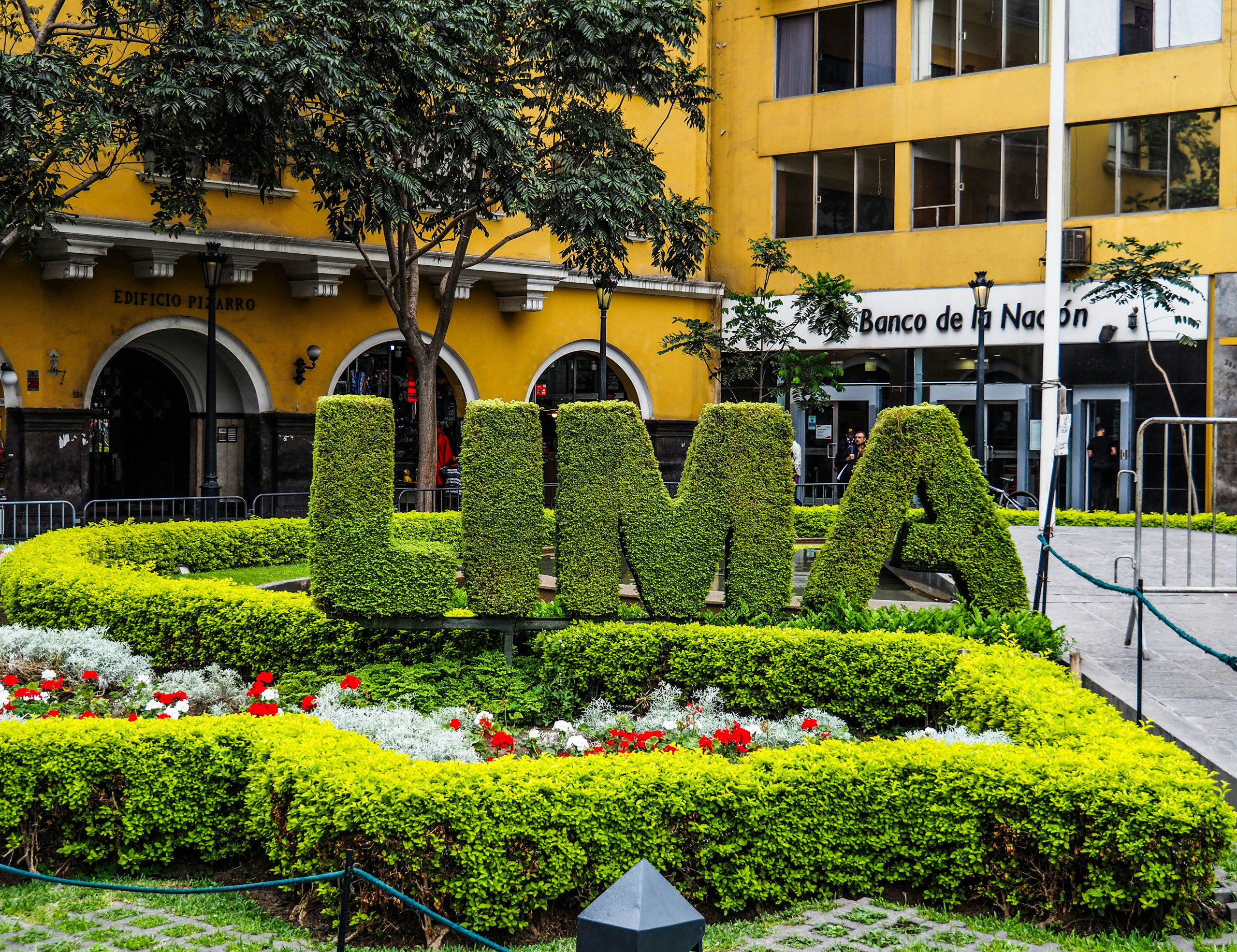When most travelers think of Peru, the mind naturally jumps to Machu Picchu, the Sacred Valley, or the Amazon jungle. But before diving into the highlands or heading toward ancient ruins, there’s a city that often serves as the first and last stop for travelers: Lima. As the capital and largest city of Peru, Lima is a bustling metropolis that combines colonial history, modern development, world-renowned cuisine, and a rich cultural heritage. Whether you’re planning a short stopover or an extended stay, Lima deserves your attention.
In this guide, we’ll explore everything you need to know about Lima — from its history and neighborhoods to food, safety tips, transportation, and must-see attractions.
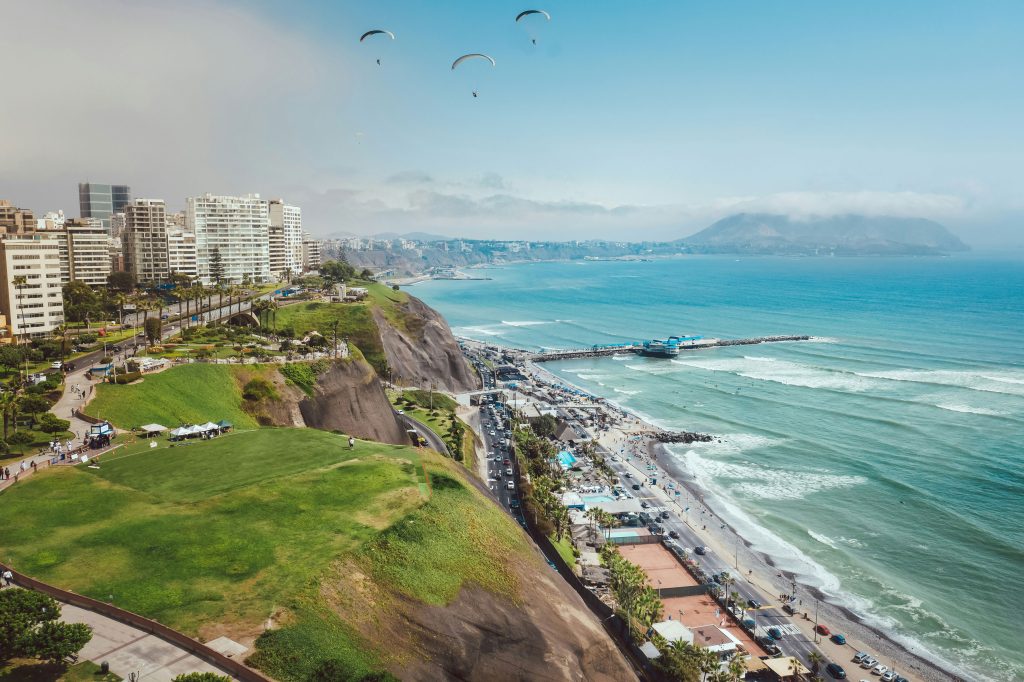
A Brief Overview of Lima
Lima is the political, economic, and cultural heart of Peru. Home to over 10 million people, it’s not only the most populous city in the country but also one of the largest cities in South America. The city stretches along the Pacific Coast, offering a unique mix of ocean views and urban sprawl.
Founded by Spanish conquistador Francisco Pizarro in 1535, Lima was originally known as the “City of Kings” (La Ciudad de los Reyes). It quickly became the most important city in the Spanish Viceroyalty of Peru and played a central role in the colonization of South America.
Today, Lima is a city of contrasts. You’ll find colonial churches and modern skyscrapers, traditional markets and high-end malls, buzzing nightlife and tranquil parks — all coexisting in a city that’s constantly evolving.
The Climate: When to Visit Lima
Lima has a mild desert climate, which means it rarely experiences extreme temperatures. However, it’s important to note that Lima is often covered by a gray coastal mist, especially during the winter months (May to October). This phenomenon, known as La Garúa, gives the city a cloudy and humid atmosphere despite very little rainfall.
- Summer (December to April): Warm and sunny, with temperatures ranging from 24°C to 30°C (75°F to 86°F). This is the best time to enjoy the beaches and outdoor activities.
- Winter (May to October): Cooler and cloudier, with temperatures averaging 15°C to 20°C (59°F to 68°F). It’s not cold, but the overcast skies can feel a bit gloomy.
💡 Pro Tip: If you want sunshine and clear skies, aim to visit between January and March.
The Districts of Lima: Where to Stay and Explore
Lima is divided into 43 districts, but for travelers, a few key areas stand out:
1. Miraflores 🌴
Miraflores is the most popular district for tourists — and for good reason. It’s clean, safe, and filled with restaurants, cafes, bars, and shops. The Malecón, a scenic clifftop walkway overlooking the Pacific Ocean, is perfect for walks, jogs, or even paragliding. You’ll also find Larcomar, an upscale shopping center built into the cliffside.
2. Barranco 🎨
If you love art, music, and bohemian vibes, Barranco is your spot. This district is full of colorful murals, independent galleries, cozy cafes, and live music venues. The Puente de los Suspiros (Bridge of Sighs) is a romantic landmark, and the whole area has a laid-back, creative energy that contrasts beautifully with the rest of the city.
3. Centro Histórico (Historic Center) 🏛️
This UNESCO World Heritage Site is the heart of colonial Lima. Visit Plaza Mayor, the Cathedral of Lima, the Government Palace, and San Francisco Monastery with its eerie catacombs. The architecture here transports you back to the 16th and 17th centuries, showcasing Spanish influence at its peak.
4. San Isidro 🌆
This upscale business district is home to embassies, corporate offices, luxury hotels, and the Huaca Huallamarca, a pre-Incan pyramid right in the middle of the neighborhood. It’s ideal for business travelers or those looking for a quieter stay with high-end amenities.
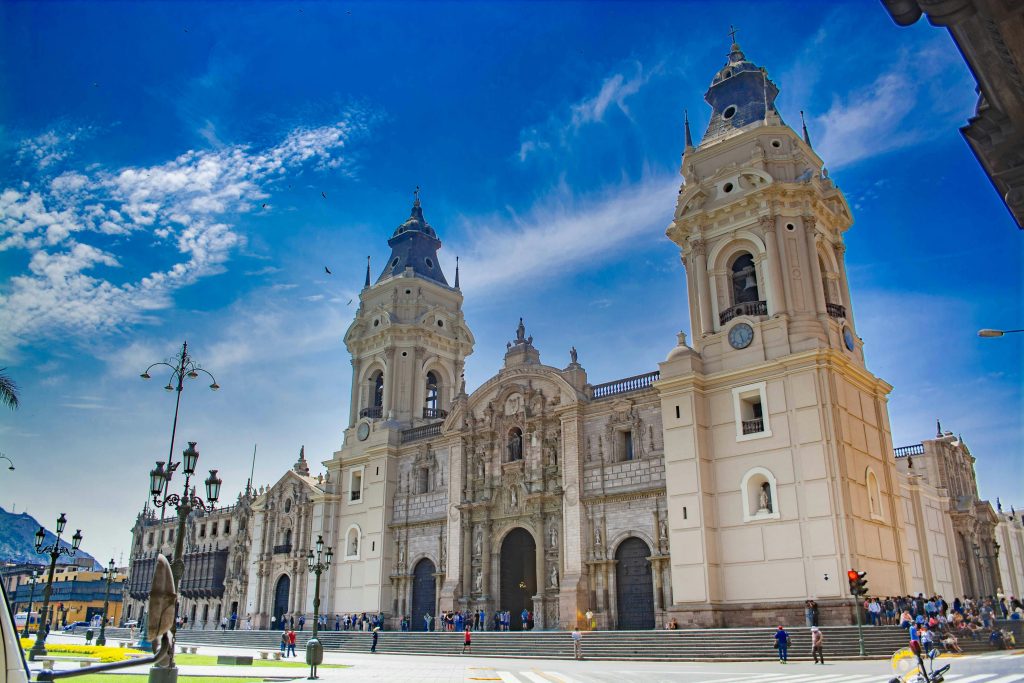
Food in Lima: A Culinary Capital of the World 🍽️
Lima is often called the Gastronomic Capital of South America, and it’s easy to see why. The city is home to some of the world’s top-ranked restaurants, like Central, Maido, and Astrid y Gastón. But you don’t need to spend a fortune to eat well — Lima’s street food and traditional markets offer incredible dishes at very affordable prices.
Here are some dishes you must try in Lima:
- Ceviche: Fresh fish marinated in lime juice with onions, chili, and cilantro. It’s Peru’s national dish and a coastal favorite.
- Lomo Saltado: A stir-fry that blends Chinese and Peruvian flavors, with beef, onions, tomatoes, and fries served over rice.
- Anticuchos: Grilled beef heart skewers, often served with boiled potatoes and spicy sauces.
- Pollo a la Brasa: Peruvian-style rotisserie chicken with crispy skin and flavorful spices.
Don’t forget to try a Pisco Sour, the national cocktail made from grape brandy, lime juice, egg white, and bitters. 🍸
Transportation in Lima: How to Get Around the City 🚖🚌🚇
Getting around Lima can be both exciting and challenging. As a sprawling urban area, Lima has heavy traffic, especially during rush hours (7–10 a.m. and 5–9 p.m.). But with the right knowledge, you can move through the city efficiently.
1. Metropolitano
The Metropolitano is a rapid transit bus system with dedicated lanes that run through the main areas of Lima, including Barranco, Miraflores, and Centro Histórico. It’s an affordable and efficient way to travel.
- 🔸 Cost: Around 3.50 soles per ride.
- 🔸 Payment: You need a rechargeable card (tarjeta del Metropolitano), available at most stations.
2. Taxis and Rideshares
Taxis are widely available, but most don’t use meters, so always agree on the fare before the ride. For safety and convenience, many travelers prefer apps like:
- Uber
- Cabify
- DiDi
- InDrive
These offer fixed prices, driver info, and safer experiences.
3. Public Buses and Combi Vans
Public buses and “combis” (small vans) are cheap and abundant, but they can be confusing for foreigners. There are no official stops — they often yell the destination from the window and pick up/drop off people on the street. Unless you’re with a local or speak fluent Spanish, it’s better to avoid them.
4. Walking and Biking
Districts like Miraflores and Barranco are very walkable. There are also dedicated bike paths along the Malecón. You can rent bikes or scooters easily in tourist areas.
🚨 Safety Tip: Be cautious when crossing streets. Drivers in Lima often don’t yield to pedestrians, even at crosswalks.
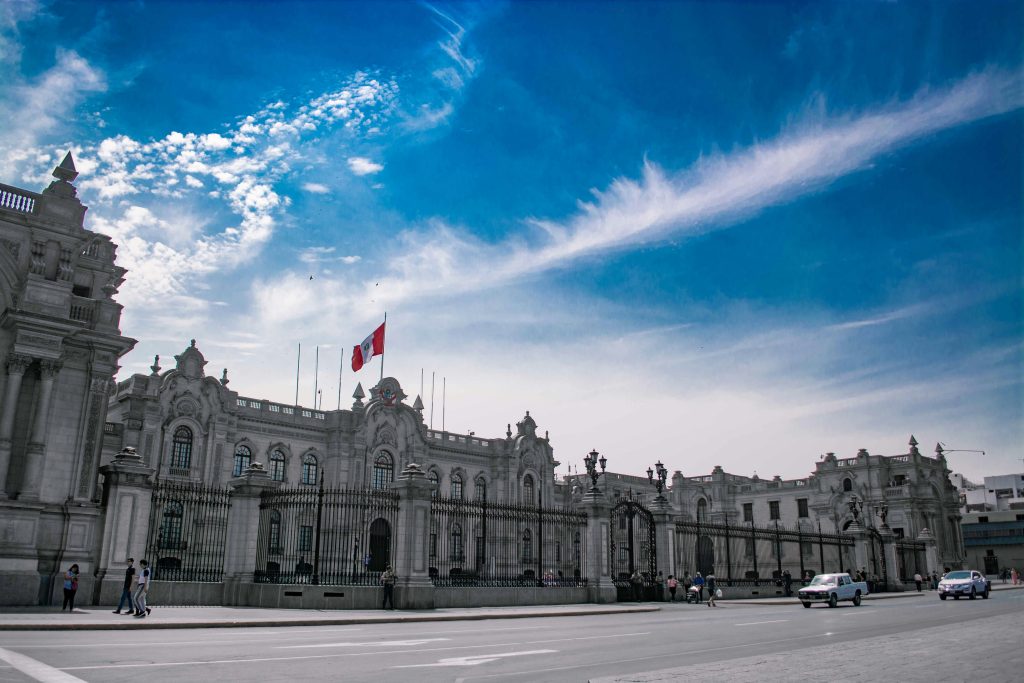
Top Attractions in Lima: What You Can’t Miss ⭐
While many travelers use Lima as a stopover, the city is full of historical sites, museums, parks, and cultural landmarks that deserve attention. Here are the highlights:
1. Plaza Mayor (Plaza de Armas) 🏰
The historic heart of Lima. Surrounded by important buildings like the Government Palace, Lima Cathedral, and Municipal Palace, it’s the perfect place to dive into colonial history.
2. Monastery of San Francisco and the Catacombs 💀
This iconic church is known for its baroque architecture and underground catacombs, where you can see thousands of neatly arranged bones from colonial-era burials.
3. Parque Kennedy 🐱🌳
Located in Miraflores, this park is surrounded by restaurants and cafes and is famously home to dozens of friendly stray cats. A great place to relax, watch street performers, or grab some street food.
4. Larco Museum (Museo Larco) 🏛️
Housed in an 18th-century mansion, the Museo Larco offers an outstanding collection of pre-Columbian art, including a world-famous room of erotic pottery. It’s one of Peru’s most impressive museums.
5. Huaca Pucllana 🏯
An ancient adobe pyramid right in the middle of Miraflores. This pre-Incan archaeological site offers guided tours that shed light on Lima’s early civilizations.
6. Circuito Mágico del Agua (Magic Water Circuit) 🌈
Located in Parque de la Reserva, this is a must-visit attraction at night. It features dozens of illuminated fountains, interactive water displays, and light shows. It’s family-friendly and truly magical.
7. Love Park (Parque del Amor) ❤️
Overlooking the ocean in Miraflores, this romantic park features a sculpture of a couple embracing, mosaic walls with love quotes, and stunning sunset views.
Lima’s Rich History: From the Incas to Independence 📜
Long before the Spanish arrived, the region around Lima was home to powerful civilizations like the Lima, Wari, and Ichma cultures. These societies built impressive temples, irrigation systems, and cities — many of which still remain today as archaeological sites.
When Francisco Pizarro founded Lima in 1535, he envisioned it as a new capital for the Spanish Viceroyalty of Peru. The city quickly grew in wealth and importance, becoming a key port for Spain’s trade in gold, silver, and goods between the Americas and Europe.
Lima’s colonial center became known for its baroque churches, monasteries, and Spanish mansions. However, Lima also endured natural disasters, including devastating earthquakes in the 17th and 18th centuries.
In 1821, José de San Martín declared Peru’s independence from Spain in Lima. Since then, the city has continued to evolve — through military governments, economic booms, social unrest, and cultural revival — into the dynamic capital it is today.
Safety in Lima: Is It Safe to Travel Here? 🛡️
Like many major cities around the world, Lima has safe areas and others that are best avoided, especially at night. With proper precautions and awareness, most travelers visit Lima without any issues.
✅ Safe Districts
- Miraflores, Barranco, and San Isidro are generally safe, especially during the day.
- These areas have a visible police presence and are accustomed to tourists.
⚠️ Districts to Avoid (Especially at Night)
- Callao (especially near the port and airport)
- Parts of La Victoria, San Juan de Lurigancho, and El Agustino
- Avoid walking alone in poorly lit or empty areas.
🧠 Safety Tips
- Use Uber or Cabify instead of hailing taxis from the street.
- Don’t flash expensive jewelry, phones, or large amounts of cash.
- Use ATMs located inside malls or banks, not on the street.
- Be cautious with your bag or backpack — pickpocketing can happen in crowded places.
- Ask your hotel or host which areas to avoid and always follow local advice.
👮♀️ Tip: Tourist Police (Policía de Turismo) are available in major tourist zones and speak English. Don’t hesitate to ask them for help.
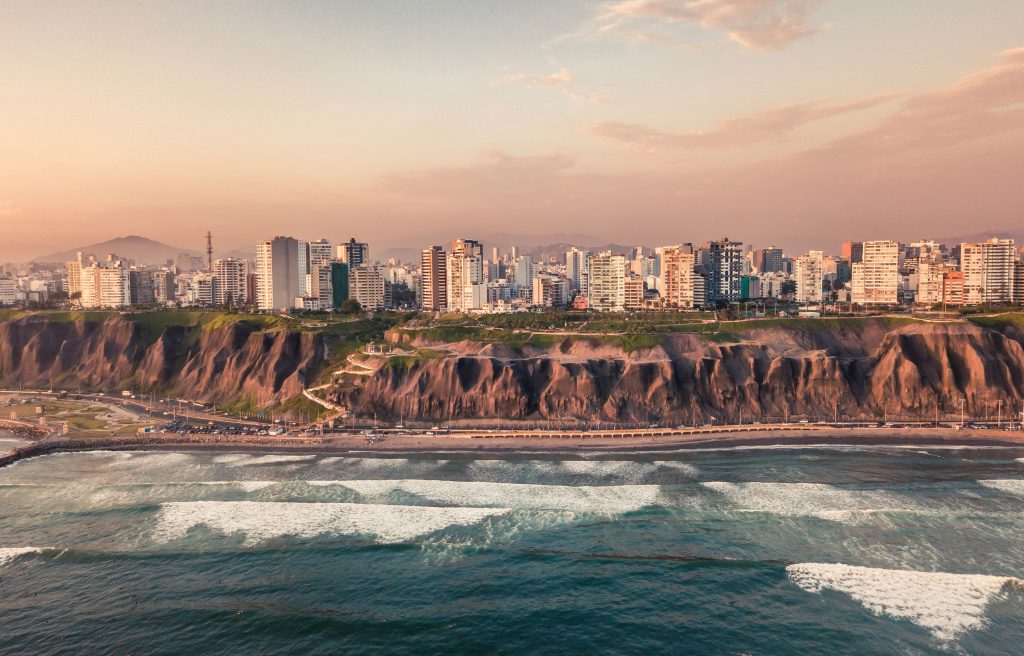
Cultural Etiquette: What You Should Know 🙋🇵🇪
Peruvians are warm, friendly, and proud of their heritage. As a visitor, showing respect for the culture goes a long way.
👋 Greetings
- A friendly handshake is common.
- Among friends or when introduced, a kiss on the right cheek is typical between women or a man and a woman.
🍽️ Dining
- It’s common to greet everyone at the table when arriving and leaving.
- Tipping is appreciated: 10% is standard in restaurants.
- Don’t start eating until everyone is served.
🗣️ Language
- Spanish is the main language. English is spoken in tourist areas, but not everywhere.
- A few basic phrases in Spanish can go a long way:
- Gracias = Thank you
- Por favor = Please
- ¿Cuánto cuesta? = How much does it cost?
- ¿Dónde está el baño? = Where is the bathroom?
🙏 Respecting Traditions
- When visiting churches or religious sites, dress modestly.
- Be respectful when photographing locals, especially in traditional attire — always ask first.
Day Trips from Lima: What’s Nearby? 🏞️🌊
Lima isn’t just a destination — it’s a perfect hub for incredible day trips. Whether you’re into beaches, ancient ruins, or nature, there’s something nearby for every type of traveler.
1. Pachacamac 🏛️
Just 45 minutes south of Lima, Pachacamac is an expansive archaeological site that predates the Incas. It was once a major religious center on the coast and features temples, pyramids, and museums. Ideal for history lovers.
- 📍Location: Lurín District
- 🕓 Duration: Half-day trip
2. Lomas de Lachay 🌿
During the winter months (July–October), the barren coastal hills north of Lima transform into green oases filled with fog-fed vegetation. Hike the trails and observe native flora and fauna.
- 📍Location: Around 2 hours from Lima
- 🕓 Duration: Full-day trip
3. Paracas and the Ballestas Islands 🐧🐬
Known as the “Poor Man’s Galápagos”, this day trip includes a boat ride to Ballestas Islands, where you can see sea lions, penguins, and birds. You can also explore the Paracas National Reserve, a stunning desert-meets-ocean landscape.
- 📍Location: Around 3–4 hours south of Lima
- 🕓 Duration: Full day (or overnight)
4. Lunahuaná 🍷🚣
For those seeking adventure, Lunahuaná offers rafting, zip-lining, and wine tasting along the Cañete River. It’s a scenic and action-packed escape from the city.
- 📍Location: Around 3 hours from Lima
- 🕓 Duration: Full day or weekend
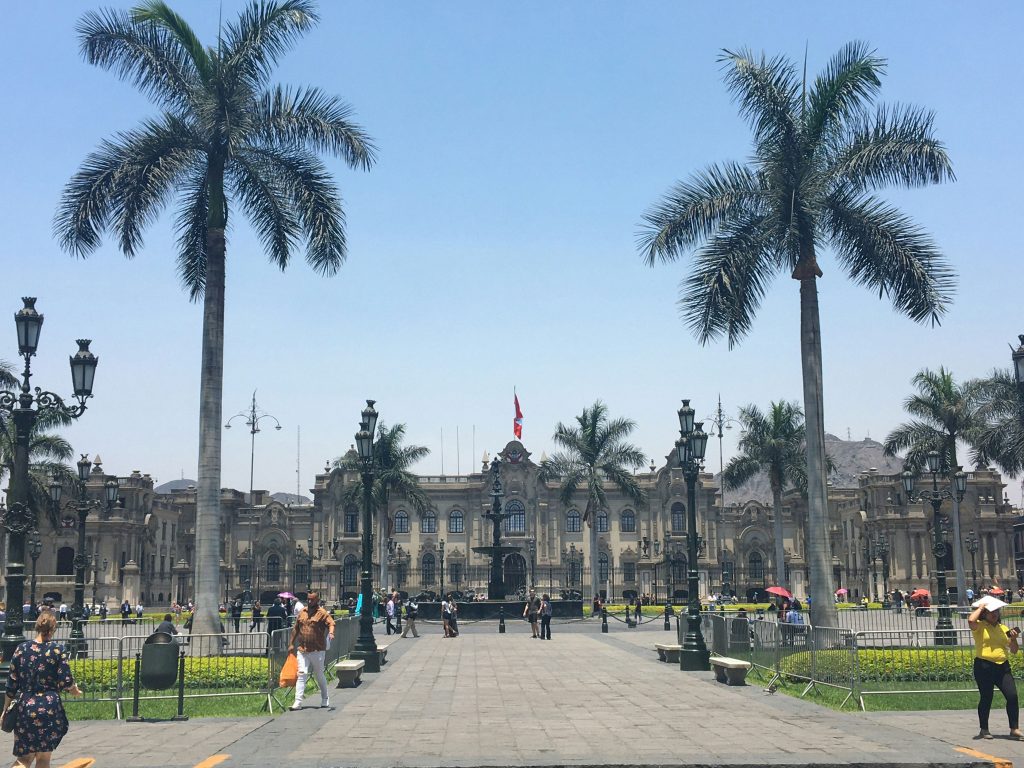
Shopping in Lima: What to Buy and Where 🛍️
Looking for souvenirs or local treasures? Lima has a variety of markets, boutiques, and shopping centers to suit every budget.
🎁 Top Peruvian Souvenirs
- Alpaca Wool Products: Sweaters, scarves, and ponchos (look for 100% baby alpaca for the best quality)
- Silver Jewelry: Peru is one of the world’s top silver producers
- Ceramics and Pottery: Inspired by pre-Columbian art
- Pisco Bottles: Bring home a taste of Peru’s national spirit
- Coffee and Chocolate: High-quality and locally grown
🛍️ Best Places to Shop
- Indian Market (Mercado Indio) in Miraflores: Dozens of stalls selling crafts, textiles, and souvenirs
- Larcomar Mall: Oceanfront shopping with boutiques, restaurants, and great views
- Jockey Plaza: One of Lima’s largest malls, ideal for international brands and modern shopping
- Gamarra: A massive textile market with cheap clothes — chaotic but authentic (not recommended for tourists without local guidance)
💡 Tip: Bargaining is common in street markets — don’t be afraid to negotiate (politely)!
Suggested Itineraries: How to Make the Most of Your Time in Lima📅🗺️
⏰ 1-Day Itinerary (Layover Stop)
If you only have one full day in Lima (like many travelers do), here’s how to experience the highlights:
- Morning: Start with a walk or bike ride along the Malecón in Miraflores. Enjoy ocean views and stop at Parque del Amor for photos.
- Midday: Visit Huaca Pucllana, then have a traditional ceviche lunch at a local cevichería like La Mar or El Mercado.
- Afternoon: Head to the Centro Histórico to explore Plaza Mayor, the Cathedral, and San Francisco Monastery.
- Evening: End the day at the Magic Water Circuit in Parque de la Reserva for the fountain light show.
🕑 2-Day Itinerary
With an extra day, you can dig a bit deeper.
Day 1: Follow the 1-day itinerary above.
Day 2:
- Morning: Explore Barranco — visit the Bridge of Sighs, check out local art galleries, and grab brunch in a hip café.
- Afternoon: Visit the Larco Museum and its beautiful garden café.
- Evening: Enjoy a gourmet dinner at one of Lima’s world-famous restaurants (like Central or Maido — reserve in advance!).
🧳 3+ Days: Extended Stay or Cultural Exploration
If you’re spending several days in Lima, consider adding:
- A day trip to Pachacamac, Paracas, or Lomas de Lachay.
- A cooking class or Pisco Sour workshop.
- Visits to local markets like Surquillo or Magdalena for an authentic food experience.
- A Peruvian paso horse show or folklore dance performance.
Lima rewards those who linger.
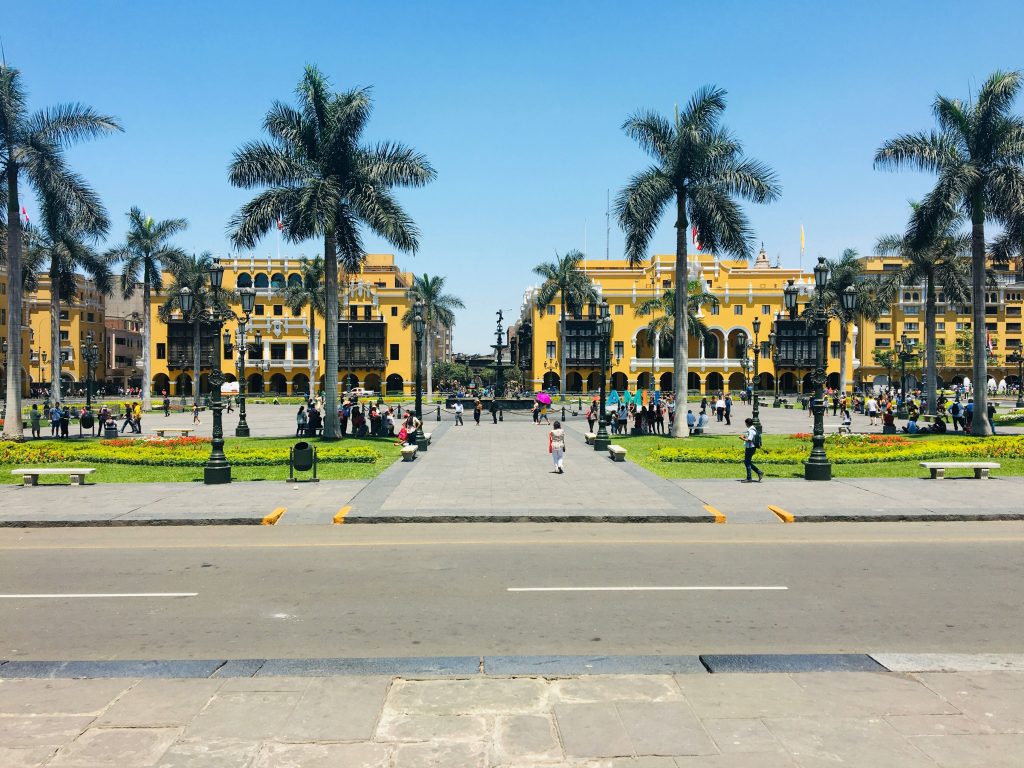
FAQs About Visiting Lima ❓🇵🇪
Q: Do I need to speak Spanish in Lima?
A: While many people in tourist areas speak some English, Spanish is essential in most daily interactions. A few basic phrases and translation apps can go a long way.
Q: Is Lima worth visiting or should I skip it?
A: Absolutely worth visiting! Lima offers incredible food, vibrant culture, ocean views, and rich history. It’s not just a stopover — it’s a destination in its own right.
Q: Can I drink tap water in Lima?
A: No. Tap water is not considered safe to drink. Stick to bottled or filtered water, even for brushing your teeth.
Q: What’s the best time of year to visit Lima?
A: The best weather is from December to April, when it’s warm and sunny. May to October tends to be cloudier but is still perfectly visitable.
Q: Is Lima expensive?
A: Lima can be affordable or luxurious, depending on your travel style. Street food and public transport are budget-friendly, but top restaurants and hotels can be pricey.
Q: How far is Lima from Machu Picchu?
A: Lima is about 1 hour by plane from Cusco, the gateway to Machu Picchu. From Cusco, you’ll need to travel by train or trek to reach the citadel.
Final Thoughts: Why You Shouldn’t Overlook Lima 💬🌆
Lima is more than just Peru’s capital — it’s a place where ancient history meets modern energy, where world-class cuisine is served beside ancient ruins, and where diversity and creativity pulse through every district.
Whether you’re strolling through Miraflores with ocean breeze on your face, watching a street artist in Barranco, or learning about pre-Columbian cultures in a museum, Lima offers a rich, immersive experience for any traveler.
Many visitors regret not giving Lima enough time — don’t make that mistake. With its hospitality, flavor, beauty, and complexity, Lima is a city that deserves to be explored, appreciated, and remembered.
🌎✈️ Are you planning a trip to Lima? Have you visited before? What surprised you the most about Peru’s capital city?
👉 Let us know in the comments below!

